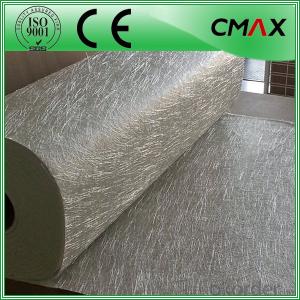When you think of HVAC systems, the first thing that comes to mind is probably the big, hulking furnace or air conditioner in your basement or attic. But there’s a small, yet incredibly important, component of these systems that often goes unnoticed: the flexible duct connectors. These little guys are the unsung heroes of your home’s heating and cooling system, and today, we’re going to dive into the world of HVAC flexible duct connectors, exploring their types, uses, and why they matter so much.
Let’s start with the basics. What are flexible duct connectors? Simply put, they’re the parts that connect the various components of your HVAC system, such as the air handler to the ductwork. They’re made from flexible materials, which allows them to bend and twist as needed to fit the unique layout of your home. But beyond their basic function, there’s a lot more to these connectors than meets the eye.
Types of Flexible Duct Connectors
There are several types of flexible duct connectors, each with its own unique characteristics and uses. Let’s take a look at some of the most common types:
Spiral Wire Reinforced
Spiral wire reinforced duct connectors are one of the most common types. They’re made from a flexible material that’s reinforced with a spiral wire, which provides extra strength and durability. This type of connector is ideal for residential applications, where the ductwork is subject to regular movement and flexing.
Non-Reinforced
Non-reinforced duct connectors are made from a single layer of flexible material without any additional reinforcement. They’re typically used in applications where the ductwork is less likely to be subject to movement or stress, such as in commercial or industrial settings.
Insulated
Insulated duct connectors are designed to reduce heat loss or gain in the duct system. They’re typically used in applications where energy efficiency is a priority, such as in green buildings or homes with high energy costs.
Non-Insulated
Non-insulated duct connectors are the simplest and most cost-effective option. They’re suitable for applications where temperature control isn’t a major concern, such as in some commercial or industrial settings.
Uses of Flexible Duct Connectors
Now that we’ve covered the types of flexible duct connectors, let’s talk about where they’re used. Flexible duct connectors are used in a variety of applications, including:
Residential HVAC Systems
In residential HVAC systems, flexible duct connectors are used to connect the air handler to the ductwork. They’re also used to connect various duct runs and to make turns in the duct system.
Commercial HVAC Systems
In commercial HVAC systems, flexible duct connectors are used in a similar way as in residential systems, but they may also be used to connect larger, more complex duct systems.
Industrial HVAC Systems
In industrial settings, flexible duct connectors may be used to connect large-scale duct systems, often in environments where the ductwork is subject to high temperatures or corrosive substances.
Duct Transitions and Take-Offs
Flexible duct connectors are also used to create transitions between different types of duct materials or to create take-offs for branch ducts.
Why Flexible Duct Connectors Matter
So, why are flexible duct connectors so important? There are several reasons:
1. Energy Efficiency: Flexible duct connectors help to maintain the energy efficiency of your HVAC system by ensuring that the airflow is directed properly and that there are no leaks.
2. Noise Reduction: They also help to reduce noise in the system by dampening vibrations and reducing turbulence in the airflow.
3. Ease of Installation: Flexible duct connectors are easy to install, which can save time and labor costs during the installation process.
4. Flexibility: The flexibility of these connectors allows them to fit into tight spaces and navigate around obstacles, making them ideal for homes with complex layouts.
5. Durability: High-quality flexible duct connectors are designed to last, reducing the need for frequent replacements and minimizing maintenance costs.
Choosing the Right Flexible Duct Connector
When it comes to choosing the right flexible duct connector for your HVAC system, there are a few factors to consider:
1. Material: Consider the material of the connector and whether it’s suitable for your specific application. For example, some materials may be more resistant to heat or moisture than others.
2. Reinforcement: Depending on the application, you may need a connector with reinforcement, such as spiral wire, to provide extra strength and durability.
3. Insulation: If energy efficiency is a priority, consider choosing an insulated duct connector to reduce heat loss or gain.
4. Size: Make sure to choose the right size connector for your duct system to ensure a proper fit and optimal performance.
5. Certifications: Look for connectors that have been tested and certified by recognized organizations, such as UL or SMACNA, to ensure they meet industry standards for safety and performance.
Conclusion
In conclusion, flexible duct connectors play a crucial role in the performance and efficiency of HVAC systems. By understanding the different types, uses, and factors to consider when choosing a connector, you can ensure that your HVAC system is operating at its best. So, the next time you think about your home’s heating and cooling system, don’t forget about the little guys – the flexible duct connectors that keep everything running smoothly.

